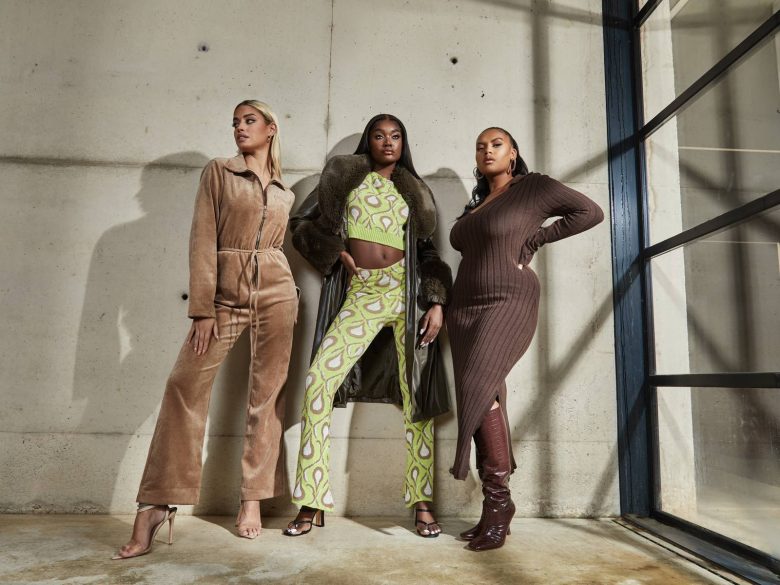When the world went into lockdown, teens took to the internet in droves. Sixteen-year-old Sky Haarsma turned to fashion blogs only to find millennial writers struggling to connect. They covered topics that appealed to older readers and featured designers who were out of reach. In the wake of the pandemic, she made a bold decision. She continued her education online while launching a fresh resource for attainable, trendy Gen Z fashion, beauty, and lifestyle content.” The It Girl Guide (TIGG) is a blog by Gen Zers for Gen Zers,” explains Haarsma. “Most blogs by millennials are trying to cater to everyone – I’m not. I keep it personal by sharing what I see and what I love. I want readers who are on the same page as me – it’s like our little ‘girl group.'”

Source: voguebusiness.com
The challenges fashion writers encounter when connecting to Gen Z
Gen Z can be a tough crowd for online marketers. First, they are more prone to saving cash than blowing it. Second, they are more loyal to personal looks than to particular brands. Most importantly, Gen Z likes to learn about fashion authentically. Winning Gen Z over is less about being ultra-hot and more about being transparent. This is a fine line for bloggers plugging specific designers or brands.
Haarsma acknowledges her bias when she speaks up about her generation’s fashion sense, “I know some will argue, but I feel Gen Z’s fashion is much more independent and expressive than past generations. There are so many different styles out there right now. They cater to an individual’s aesthetic rather than to the generation as a whole. This generation isn’t scared to go outside the box and really express themselves through clothes and accessories.”

Source: businessoffashion.com
For Gen Z, fashion is personal
While trends for Gen Xers and millennials centered around single items such as skinny jeans, crop tops, and Aviator glasses, Gen Z is all about aesthetics. Today’s teens scroll Instagram and Pinterest to find a fun piece of clothing that fits a certain vibe or aesthetic instead of shopping for that one must-have brand.
For example, an e-girl aesthetic boldly incorporates black tank tops, chained belts, dramatic makeup, and platform boots, while a soft-girl aesthetic goes in the opposite direction mixing cute accessories with mint green, periwinkle, and lavender clothing. A grunge aesthetic is pulled off by incorporating just the right loose and comfy clothes, but dark academia recreates traditional English school uniforms with preppy outfits such as knitted vests, beige slacks, and brown overcoats. Fairycore blends nature, pastels, butterflies, springtime flowers, and magic to create outfits with a fantasy-based aesthetic, and kid core celebrates the fun nostalgia of childhood by incorporating stickers, toys, and bright colors. Cyber-Y2K is a futuristic retro blend of metallic materials, neon colors, chunky sneakers, pleated skirts, and sunglasses, while cottagecore suggests the romantic European countryside with its flowing, light-colored dresses and flower baskets.
There are dozens of other aesthetics, but the most important element of each is attitude. For the first time, an entire generation is allowing personality — not brands — to dictate fashion sense. Gen Z is opening the door to freedom of expression and holding back judgment. Finding an aesthetic is all about having fun, trying new styles, and self-discovery.
“I wonder if fashion blogs can’t connect to Gen Z because they aren’t getting in our heads,” suggests Haarsma. “I find big blogs often write about what they see on the surface. They identify the latest trend and ignore the individual behind it.”

Source: grin.co
Gen Z finds ways to afford sustainable and creative fashion
Fast fashion has become a buzzword in the industry. Styles are here and gone, and cheap clothing is made with that in mind. In fact, according to the Environmental Protection Agency, 85% of all textile products end up in landfills each year. That adds up to a garbage truck dumping a full load of clothing every second.
Retailers market the majority of this fast fashion to 18 to 24-year-old students with low incomes. That does not mean Gen Z wants that fashion pushed their way.
Haarsma says social media plays both a positive and negative role in fast fashion. “On one hand, the internet is teaching thousands of people about the effects of fast fashion. Many people in my generation are aware and purchase accordingly. On the other hand, social media causes trends to come and go faster than ever, and some people feel like they need a new outfit for every post. That side of my generation hasn’t found their personal style yet, but they will.”
Brands focusing on sustainability are often forced to reflect the cost of alternative materials, fair labor, and higher standards in their prices. Gen Zers may not be able to afford these items as a rule, but that doesn’t equate to a lack of interest. “Paying more for sustainable products is completely understandable,” says Haarsma. “These brands are too expensive for some, and that’s when they reach for fast fashion. To avoid that, my generation is finding fun ways to make fashion both sustainable and affordable. Going thrifting, shopping second-hand online stores, and upcycling keep sustainable fashion in our price range.”
Luxury fashion is another space that prices most Gen Zers out. While couture may be out of reach for most of Haarsma’s generation, they certainly appreciate the styles. “A lot of us find designer fashion creative and desirable,” she says. “My generation shops second-hand and finds vintage designer pieces to make our visions come to life, but that doesn’t mean we don’t appreciate the art of couture. It’s beautiful.”
Before fashion bloggers push expensive products or brand names on Gen Z, Haarsma encourages them to take a deeper look at their target audience. “Get to know all of us and our individual aesthetics, rather than just the most popular ones. There are so many great styles out there right now, and you should be aware of them. We find what we love and are confident about it!”
